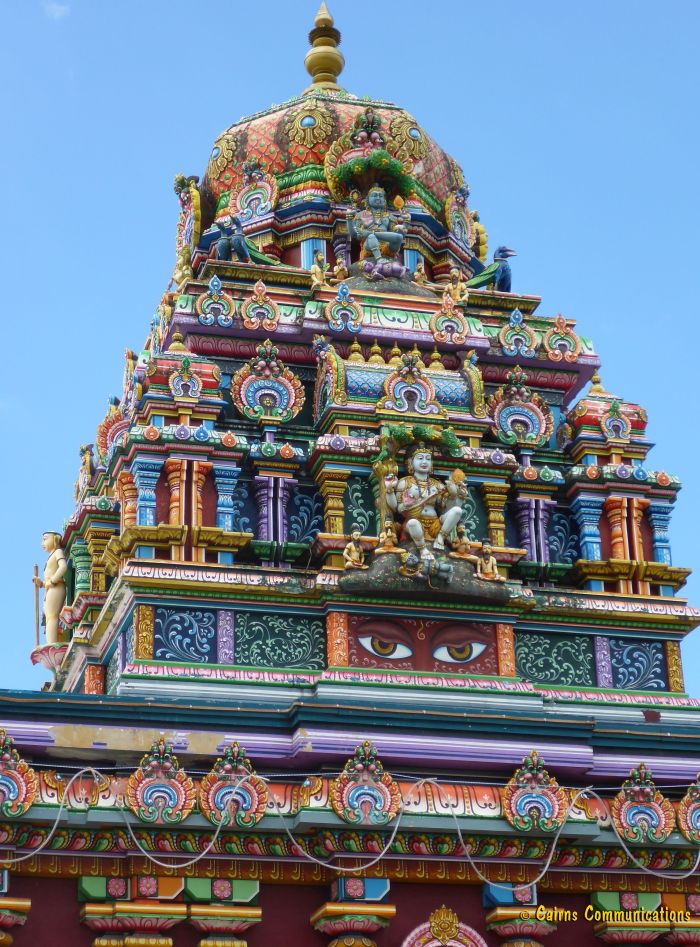The Sri Siva Subramaniya Temple is in Nadi, Fiji – and it is, like many Hindu temples, a continuous work-in-progress.
The ceilings inside are covered in murals depicting adventures of the gods and scenes from the vedas – and as soon as the ceiling is covered, a section is whitewashed and a new mural is painted over it, so that the work is never completed.
The Sri Siva Subramaniya temple was built in the 1980s, over an existing temple that dates back to the turn of the 20th century or before.
It’s built in the Dravidian style (not often seen outside India) and is dedicated to the deity Murugan, or Subrimaniya (amongst other names).
He is a god particularly honoured in the South of India, as the god of war and victory, and whose statue, specially carved in India, is housed in the main temple.
The second part of the complex is Ganesh temple, while the third section is the Meenakshi and Shiva temple.
It’s at the end of Nadi’s main street, and is surrounded by an expanse of concrete – which can prove problematic to those with sensitive tootsies.
You take your shoes off at the entrance – and it’s amusing to see tourists literally hot-footing across the cement which has absorbed the heat from the hot Fiji sun .. or at least it’s amusing until it’s your turn 🙂




It’s amazing! You see, in the 19th century there was a massive outward migration from India too. These migrants come mainly from southern India. You’ve posted before on the Sri Mariamman temple in Singapore. Its the same Dravidian style! And we witnessed a wedding there recently!
LikeLike
Cool!
We are back in Singapore next month, so I’m going to go back to Sri Mariamman temple – but I hope to go to the nearby Jamae Mosque as well.
I’m told its not as spectacular as the Sultan mosque, (which I might also try to get to).
But as I’ve said before – religion is often a doorway into culture – and the Jamae’s role in servicing Chinatown (and the area’s Tamils) looks interesting.
LikeLiked by 1 person
If you ask us, the Sultan mosque is more majestic, and since its in the midst of the old arab district, could be the first you go see.
LikeLike